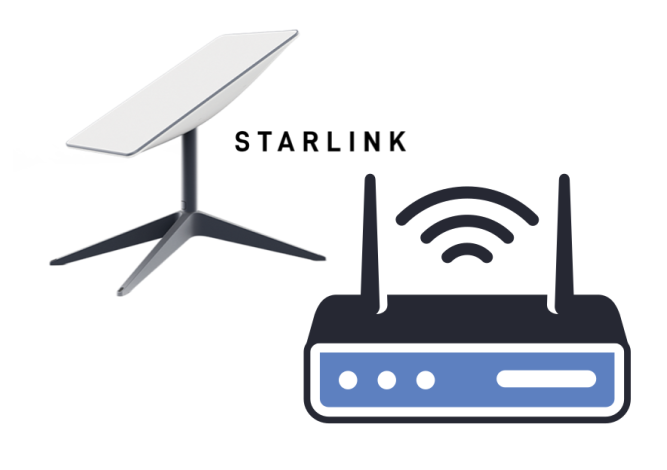
Starlink, SpaceX’s satellite internet service, has revolutionized connectivity, particularly in remote and underserved areas. The Starlink kit, which includes a satellite dish (often referred to as “Dishy McFlatface”) and a WiFi router, provides users with everything needed to get online. However, some users might find that utilizing a third-party router offers several advantages over the provided Starlink router.
Enhanced Performance and Features
Advanced Network Management
Third-party routers, particularly those from premium brands, offer advanced network management features. This includes more sophisticated Quality of Service (QoS) controls, which allow users to prioritize bandwidth for critical applications, such as video conferencing or online gaming. With these features, you can ensure that your most important activities receive the bandwidth they need.
Better Range and Coverage
The Starlink router might not provide sufficient coverage for larger homes or properties with multiple buildings. Third-party routers often come with more powerful antennas and support for mesh networking, enabling you to extend your WiFi coverage far beyond what the Starlink router can achieve. This ensures a strong and reliable connection throughout your entire space.
Customization and Flexibility
More Configuration Options
Third-party routers offer a wealth of configuration options that allow for a highly customizable network setup. Whether you need to set up a guest network, create a VPN, or implement complex firewall rules, third-party routers provide the tools necessary for these tasks. This level of customization is particularly beneficial for tech-savvy users who want to tailor their network to specific needs.
Compatibility with Other Devices
For users with existing network equipment, integrating a third-party router can be seamless. Brands like Cradlepoint, Digi International, Inseego, Peplink, and Sierra Wireless offer routers that are designed to work well with a variety of network devices, making it easier to create a unified and efficient network.
Reliability and Robustness
Industrial-Grade Durability
Some routers are often designed for industrial and enterprise use, meaning they are built to be more durable and reliable than consumer-grade equipment. This makes them an excellent choice for users in harsh environments or those who require a more robust networking solution.
Failover and Redundancy
Many third-party routers support multiple WAN connections, allowing for automatic failover between different internet sources. For example, you could set up your network to switch to a 4G/5G connection if your Starlink service experiences downtime. This ensures uninterrupted internet access, which is crucial for businesses and users who rely heavily on a stable connection.
Bandwidth Bonding
Bandwidth bonding is a powerful feature available on third-party routers, such as those from Peplink and Digi International. This technology allows you to combine multiple internet connections into a single, faster, and more reliable connection. By aggregating the bandwidth from different sources, bandwidth bonding can significantly enhance your internet experience, providing increased speed and redundancy.
Bandwidth bonding works by simultaneously utilizing multiple internet connections to distribute data packets across these connections. This process is managed by the router, which seamlessly combines the data streams from various sources, such as your Starlink satellite connection, a 4G/5G cellular link, and even a traditional DSL or cable connection. The router then reassembles these packets into a single data stream for your devices, resulting in a faster and more reliable internet connection.
Security Enhancements
Advanced Security Features
Third-party routers typically offer advanced security features that are not available on the Starlink router. These features include Intrusion Detection Systems (IDS), Intrusion Prevention Systems (IPS), and more granular parental controls. By utilizing a router with these capabilities, you can better protect your network from external threats and manage access more effectively.
Support for VLANs and Multiple WiFi SSIDs
One significant advantage of using a third-party router is the support for Virtual Local Area Networks (VLANs). VLANs allow you to segment your network into different virtual networks, each with its own security and management policies. This is particularly useful for networks with multiple WiFi SSIDs that require segregation. For instance:
- Guest Networks: Keep your guests on a separate VLAN to prevent them from accessing your private network.
- IoT Devices: Isolate your IoT devices on their own VLAN to enhance security and prevent them from interacting with more critical network resources.
- Work and Home: Create distinct networks for work and personal use, ensuring that sensitive work data remains secure.
The Starlink router offers basic functionality, like splitting the 2.4 GHz and 5 GHz bands, but lacks the advanced capabilities to create and manage VLANs. Third-party routers typically provide these advanced features, offering greater control and security over your network.
Regular Firmware Updates
Premium router brands often provide regular firmware updates to address security vulnerabilities and improve performance. This proactive approach to security can help safeguard your network against the latest threats and ensure that your router remains up-to-date with the latest features.
The StarLink Router: Is It Right For You?
While the Starlink router provides a convenient and straightforward way to get online, it may not meet the needs of all users. Whether you’re looking for enhanced performance, greater customization, improved reliability, or advanced security features, a third-party router can offer significant advantages. By investing in a high-quality router, you can optimize your Starlink setup and enjoy a more powerful, secure, and reliable internet experience.
For more information, reach out to the 5Gstore team and we’ll discuss your requirements and help determine a solution for your StarLink setup.

